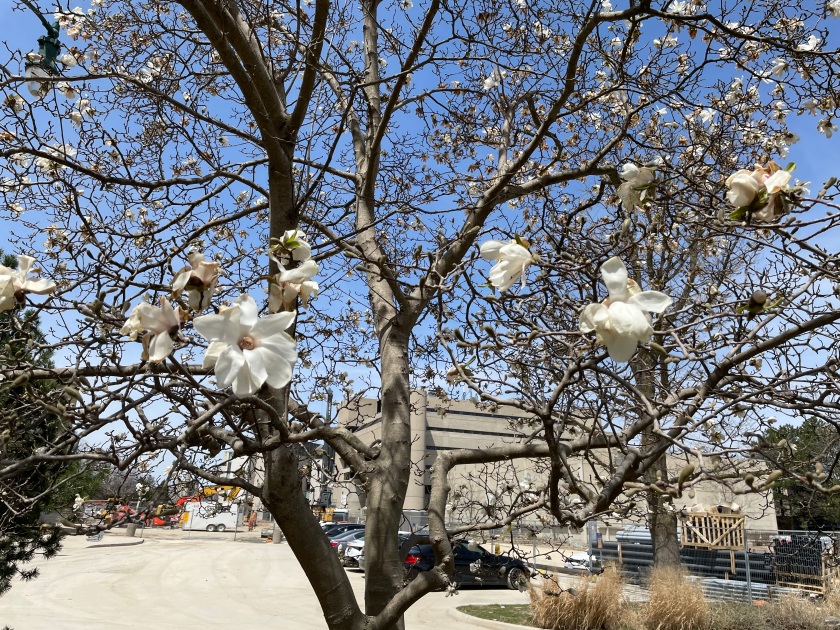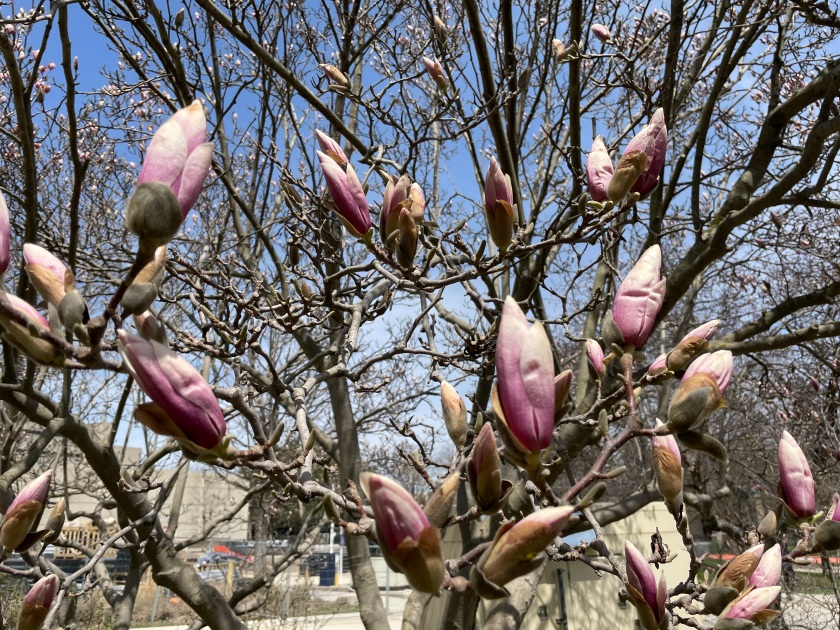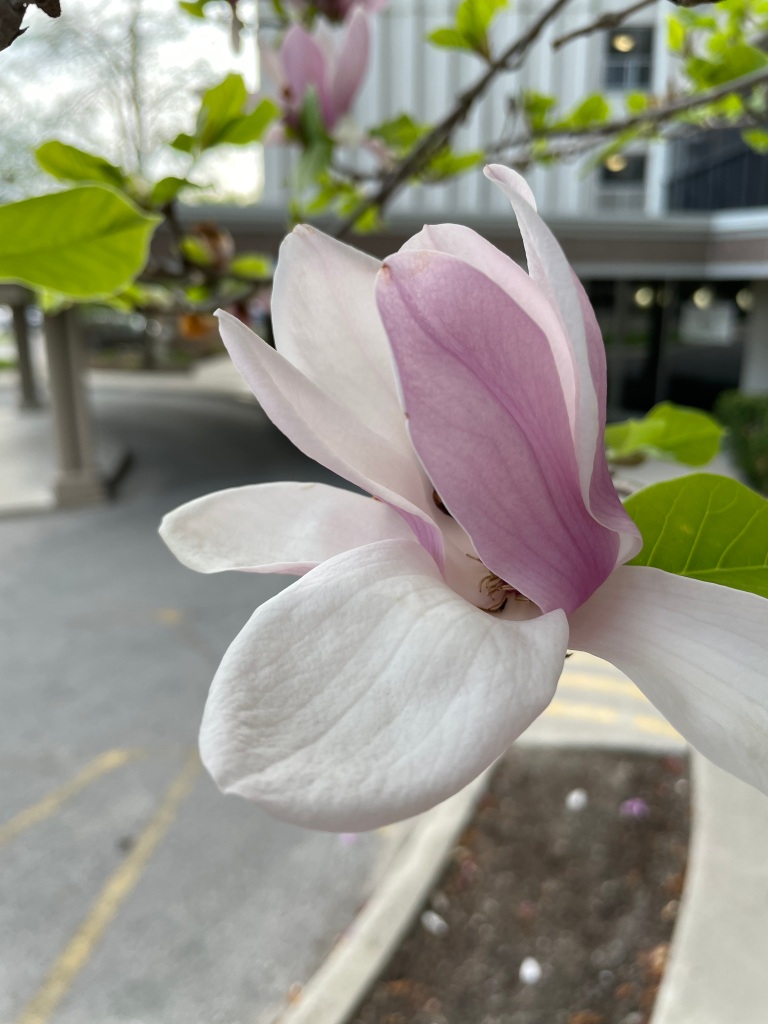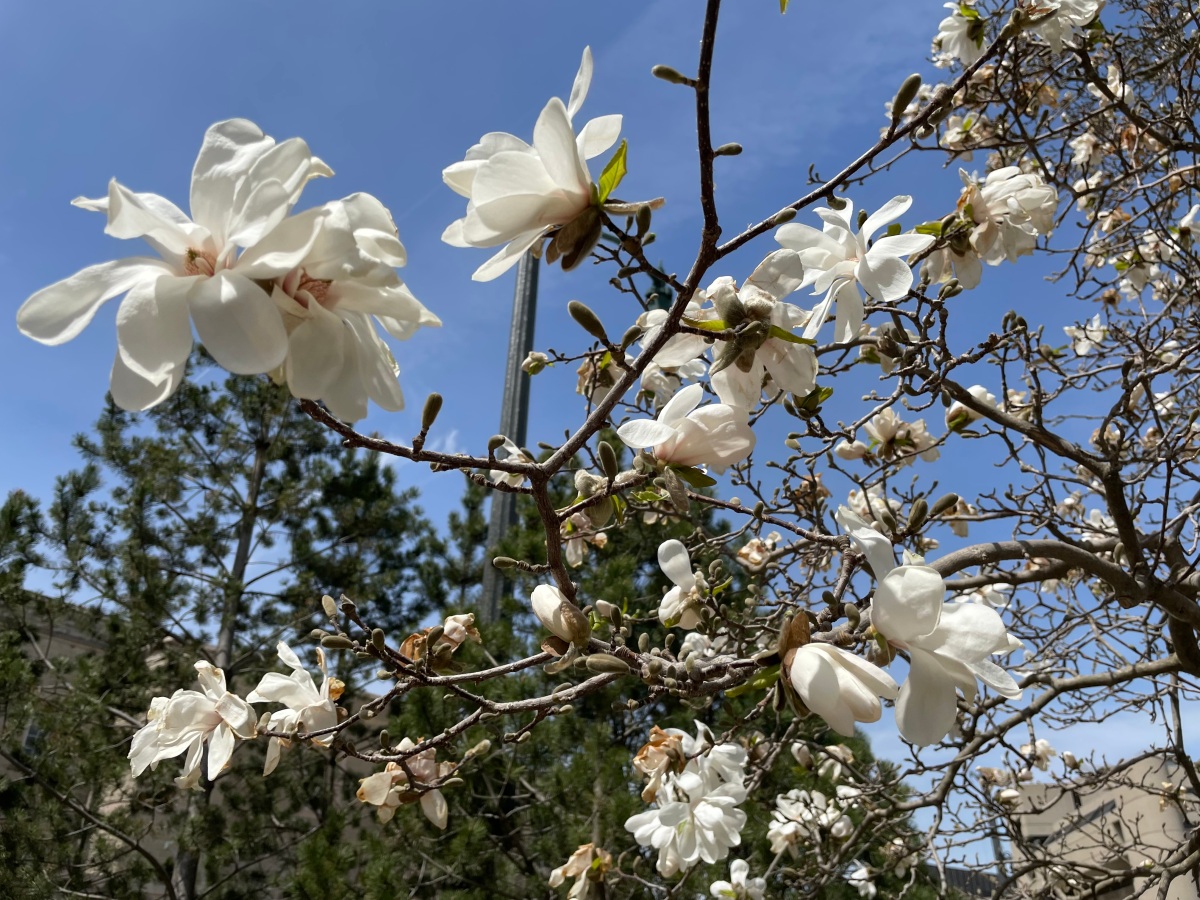I had never seen one in real life, so it is a guess that I am making that this is a magnolia tree. I think the images on Wikipedia match well enough to say this is probably correct.
This was not a tree I noticed in the previous seasons, but when I saw it blooming on the afternoon of my last exam in April, it became the thing I remember clearest of this term’s finals. After a particularly exhausting last test, I left the exam room like one leaves a shopping mall or movie theatre. I had been in a windowless room, entering it from a cool and rainy spring morning, and emerging into falling snow. The spring weather was similar to the typical London autumn snow, with snowflake clusters so large they slide from the sky rather than twirl and spin on the thermal currents. Out of sync with it, I felt I had emerged into a different season.
Then, walking to the bus stop, I saw what I thought were suspended snow clusters refusing to fall: snow balls hanging mid-air. It took a bit to process, but there it was, these marvelously large white flowers emerging in a landscape of bare branches and late spring snow falls. I had my introduction to magnolias.


According to Wikipedia, Magnolia is an ancient genus, with plants of this family existing in fossil records as old as 95 million years. They have existed longer than bees, and it is hypothesized that their flowers evolved to be pollinated by beetles.


